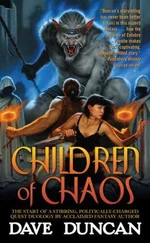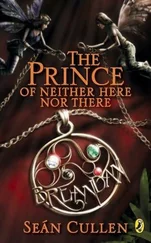“He was never home”:This quote was based on Linda Sanders’s recollection of the response by Dave’s ex-wife.
Cassie Bernall was not asked:Misty Bernall’s memoir was extremely helpful in providing details about Cassie’s life and about Brad and Misty’s reactions to the tragedy. Additional information came from my interviews with Cassie’s classmates, pastors, and church members, as well as TV interviews of the Bernalls. Journalist Wendy Murray also generously provided her field notes, including interviews with the Bernalls.
CHAPTER 6. HIS FUTURE
Dylan was giddy:Descriptions of Dylan at home that afternoon came from people who watched the video Tom Klebold shot. Thanks to Wendy Murray for sharing her interview notes for some of them.
CHAPTER 7. CHURCH ON FIRE
This is a church on fire:The descriptions of all churches and services were from my observations. I attended worship services at nearly a dozen local churches but focused primarily on three: Trinity Christian Center, West Bowles Community Church, and the Foothills Bible Church. I attended services at each of those three more than a dozen times, all after the murders.
CHAPTER 8. MAXIMUM HUMAN DENSITY
seven big bombs:It’s possible there was an eighth. To avoid assisting copycats, Jeffco authorities will not specify certain details about the bombs. We know Eric produced two for the cafeteria, two for each car, and at least one decoy, using two tanks. The reports do not state whether that was a single device or two separate ones, and Kate Battan refused to say.
The main event was scripted:The killers’ attack plan was reconstructed from a combination of their written and verbal descriptions, diagrams they made, and physical evidence, such as the placement of their cars (which they said would be used for initial firing positions). All those elements corroborated well.
he had nearly seven hundred rounds:Eric’s journal chart for bomb production also included a section on ammo. He made a column for each gun, showing each acquisition and deducting for rounds spent in training. He did not label them, except for R (for Reb) beside one column and V (Vodka) next to another. Statements on the Basement Tapes a week and a half before the attack corroborate several entries and help identify what each column signifies. The chart tallies 143 rounds for Dylan’s TEC-9, 129 for Eric’s rifle, 295 for Dylan’s shotgun, and 122 for Eric’s (272 initially, less 150 fired off), for a total of 687. This was before Manes purchased the final hundred 9mm rounds, which could be split between the first two guns.
CHAPTER 9. DADS
It came up unexpectedly:Dave’s conversation with Mr. D in the bleachers was re-created based on my interviews with DeAngelis.
team captain, Liz Carlston:The scene with Liz Carlston was based on her memoir.
Linda Lou was asleep:The Monday and Tuesday scenes with Linda vary slightly from the depictions in the book she wrote with Saltzman. In my interview, Linda recalled a few things differently, and added more details.
CHAPTER 10. JUDGMENT
the boys rose early:The killers’ activities on Tuesday morning were compiled from several sources: 1) eyewitness testimony of parents and neighbors who saw them coming or going, 2) time-stamped receipts, 3) video surveillance cameras at two stores where Eric bought gas and in the Columbine cafeteria, and 4) the killers’ handwritten schedules for the morning and taped descriptions of their plans. Several schedules appeared in their notebooks and on assorted scraps of paper, with minor variations. The external evidence indicated that they stuck close to plan.
They got something to eat:Dylan’s autopsy report indicted 160 cc of gastric contents, including “fragments of what appears to be potato skins.” Given Dylan’s love for fast food, that could have meant French fries. Eric’s showed 250 cc, no specific contents.
CHAPTER 11. FEMALE DOWN
At 11:19 they opened:For depictions of the shootings, I relied mostly on police interviews with witnesses, the Jeffco Sheriff’s Office Final Report, the governor’s report, and the El Paso County sheriff’s report. Discrepancies were sorted out through interviews with investigators, particularly lead investigator Kate Battan. I treated all Jeffco statements related to its own culpability and police response skeptically. However, the team’s documentation of the killers’ activities on April 20 was generally thorough and meticulous. Notable exceptions, such as information about Danny Rohrbough’s killer, have been corrected. The El Paso County sheriff’s department thoroughly reinvestigated Danny’s shooting, reinterviewing about 130 witnesses and approaching 65 others who refused. Its 450-page report supersedes the Jeffco report on most of the outside gunfire.
Times came from the Sheriff’s Office Final Report, and were arrived at through a variety of means, including: witness testimony and time stamps on 911 calls, dispatch calls, and the surveillance video in the cafeteria. Patti Nielson’s 911 call was particularly useful. She dropped the phone but left it off the hook, and 10 minutes, 48 seconds were recorded. The audio was then enhanced by the FBI crime lab. Every shot, crash, scream, and loud verbal exchange described by witnesses could be sequenced against a solid physical record.
Sean burst out laughing:Sean’s perceptions of what was happening came from his police reports, conducted by both Jeffco and El Paso counties.
CHAPTER 12. THE PERIMETER
The story took twenty-eight minutes:I relied on transcripts from ABC, CBS, NBC, CNN, and NPR for all descriptions and analysis of real-time TV and radio reporting. CNN stayed live for at least four hours. It had access to feeds from four local stations—affiliates of the three networks and one other station—and cut between them, providing a good cross section of local coverage as well.
CHAPTER 13. “1 BLEEDING TO DEATH”
Always the same question:Most of the descriptions and quotes from the Columbine library were based on my observations. I spent about an hour there, in the early afternoon. Misty Bernall’s thoughts and statements at the library are an exception; they were drawn from her book.
The Leawood scenes came from my later interviews with kids and parents there and from live TV reports I watched later on video.
The grousing increased when:Assessments of police reaction that afternoon came from several sources who were present and in a position to hear.
a SWAT team made its first approach:Actions of the SWAT team came from the Sheriff’s Office Final Report and from numerous other documents released by Jeffco. The movements outside were corroborated by news chopper footage. Sources for Dave Sanders’s nonrescue are described in the notes for Chapter 26.
Rachel Scott:Some witnesses reported that Rachel cried for several minutes, and the story gained great currency. However, Investigator Kate Battan makes a convincing case that Rachel’s gunshot to the temple killed her immediately.
Robyn Anderson watched it all:Most depictions of the killers’ friends’ reactions came from their police interviews. Additional details came from TV interviews some of them gave.
Nate dialed his house:All the action involving the Klebolds here comes from a combination of their police report, TV interview transcripts from Nate, and news stories documenting Byron’s interaction with coworkers. The calls between Nate and Tom were described by each of them, with only minor discrepancies.
Читать дальше







